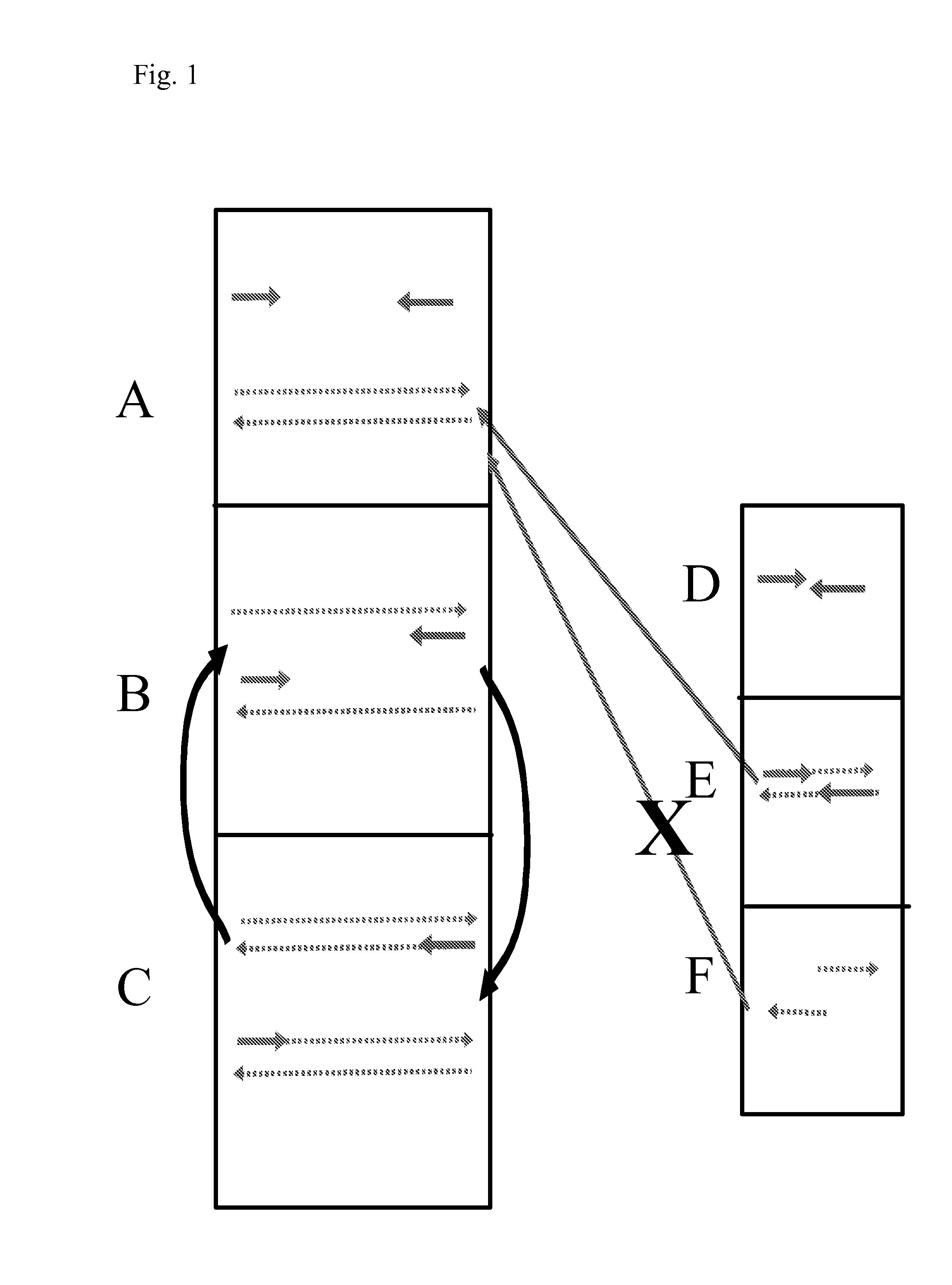Isothermal nucleic acid amplification
a nucleic acid target and isothermal technology, applied in the field of isothermal nucleic acid amplification, can solve the problems of difficult to distinguish specific attachment of a probe to its target sequence, inapplicability to cases, and consumption of assay components, so as to facilitate the separation of the target template duplex and facilitate the separation of the target duplex
- Summary
- Abstract
- Description
- Claims
- Application Information
AI Technical Summary
Benefits of technology
Problems solved by technology
Method used
Image
Examples
example 1
Two-Primer System, No Intermediate Oligonucleotide (Prior Art System)
[0171]The protocol used is the same as that described above unless otherwise stated. The oligonucleotide constituents comprised two primers at a final concentration of 150 nM together with Template A. Template / primer configurations are shown in FIG. 6A. Template A concentrations were 1 nM unless stated and amplification was followed by Sybr green fluorescence.
[0172]The results are shown in FIG. 6B. In this two primer system, amplification occurred where the primer length was equal to or in excess of 32 bases (U32+D32; U35+D35 and U40+D40). No amplification occurred with the 23 and 20 base primers (U23+D23 and U20+D20). Primer dimer artefacts occurred as shown for the 40 base primers (no template). These artefacts generally emerged at the same time as template concentrations of 10 pM and this limited the sensitivity of the technique to this level.
example 2
Three-Primer System (Using Two Primers and a Non-Extendible Intermediate Oligonucleotide)
[0173]The protocol used is the same as that described above unless otherwise stated. Template / oligonucleotide / primer configurations are shown in FIG. 7A. Primers were U16 and D16 used at a concentration of 200 nM each. Intermediate oligonucleotide concentrations were 150 nM and template concentrations were 100 fM. The signal was produced by Sybr green fluorescence.
[0174]FIG. 7B demonstrates amplification of the three oligonucleotide system configured as shown in FIG. 7A using upstream and downstream primers U16 and D16 respectively. Amplification is achieved with primers of 16 bases in length and is dependent on the non-extendible oligonucleotide (IO). The system is less prone to artefacts. The primers of 16BP are able to amplify if the intermediate oligo is cognate (IO1+primers+Template1; IO2+primers+Template2)). Primers will not amplify alone (primers only); neither will intermediate amplify ...
example 3
[0175]Primers in a Tripartite System must be Below 20 Bases in Length under the Conditions used (Dependent on Melt Temperature of the Primer and Ambient Temperature and Denaturation Agents)
[0176]The protocol used is the same as that described above unless otherwise stated. Primers were of various lengths were used at a concentration of 200 nM each. Intermediate oligonucleotide (IO1) was used at 150 nM and template concentration was 100 fM. The signal was produced by Sybr green fluorescence.
[0177]The results are shown in FIG. 8. Primers of 12, 14 and 16 bases amplified efficiently. The primer set of 18 bases amplified less efficiently and the 20 base primer set did not amplify and therefore would not form artefacts.
PUM
| Property | Measurement | Unit |
|---|---|---|
| temperatures | aaaaa | aaaaa |
| temperatures | aaaaa | aaaaa |
| temperatures | aaaaa | aaaaa |
Abstract
Description
Claims
Application Information
 Login to View More
Login to View More - R&D
- Intellectual Property
- Life Sciences
- Materials
- Tech Scout
- Unparalleled Data Quality
- Higher Quality Content
- 60% Fewer Hallucinations
Browse by: Latest US Patents, China's latest patents, Technical Efficacy Thesaurus, Application Domain, Technology Topic, Popular Technical Reports.
© 2025 PatSnap. All rights reserved.Legal|Privacy policy|Modern Slavery Act Transparency Statement|Sitemap|About US| Contact US: help@patsnap.com



